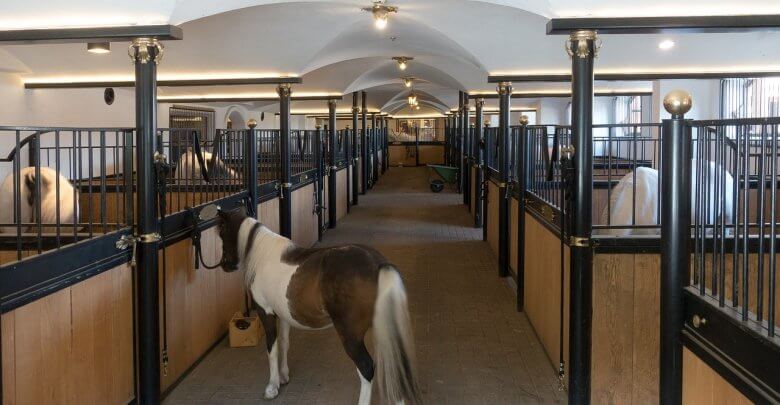
If you follow racing at all, you will have probably heard of syndicates and racing clubs and these vehicles allow people to come together to share the costs of ownership. There may not actually be too much difference between a syndicate and a racing club, but then again one syndicate or racing club can be very different from another, so before you get involved, it is a good idea to get a good understanding of what you are getting for your money. Fortunately for you, you are in the right place for some help!
Hopefully the last three articles have whetted your appetite for racehorse ownership, but it is too expensive for you isn’t it? Well, maybe not.
Horses are not cheap, and nor are training fees and costs once you have one. Don’t get me wrong, sole ownership is probably brilliant if you can afford it, but if you were purchasing a horse for £25,000 to £30,000 (cheaper and MUCH more expensive horses are available!), you would need around £50,000 to buy the horse and have it trained for a year. If you can stretch to it, then you will be able to choose your own trainer, with whom you will develop a close relationship, and you can decide where your horse will run and who will ride it. On race-day, you will be able to use spare owners’ badges to entertain your friends, colleagues and clients at the races and any prize money won will be all yours. Sadly, however, the budget is more than most can afford to spend on leisure, and that is where shared ownership comes in.
The simple difference between a syndicate and a racing club is how the ownership of the horse is formally recorded. In the case of a syndicate, each member is a registered owner with the British Horse Racing Authority, whereas in a racing club, the club is the registered owner of the horse and the people become members of the club based on its terms of operation.
Finding the right option for you is all about identifying your priorities, and finding the things that “tick your boxes” at the right cost. Perhaps you might wish to consider the following:
1 – Are you looking for a meaningful share of one horse or smaller interest in more than one?
2 – Are you keen to get involved in jumpers, flat horses or dual-purpose horses, remembering that each may run at different times of the year?
3 – Is the choice of trainer important in terms of location for stable visits etc and where the horse is likely to race?
4 – What benefits are important to you? These may include stable visits, communications, badges on race days, shares of prize money etc..
Armed with your thoughts on the above, you should be well placed to identify what type of shared ownership will work best for you. One last thing that I would urge though is that you consider the cost benefit case of your choice!
Racing clubs often do not limit membership, so it is important to understand how many members you are likely to be sharing ownership with. As much as they would like to, your racing club will not be able to get owners badges for everyone. If 1,000 of their 10,000 members all want to come racing, and even if the club offers a full share of prize money, your 1/10,000th is unlikely to provide you with a big prize money payout. So it is important to understand how many people are involved, and therefore what your “share” actually looks like. This is not a slight on the racing club model, some clubs give you access to numerous trainers and lots of horses, and issue fantastic communications, and you might decide that prize money and owners badges are not as important to you as these other benefits.
Cost benefit comparisons also apply to syndicates. If one syndicate is made up of 4 people each owning 25% of the horse, whilst another has 3,000 shareholders all owing 0.003% of the horse, which one would you want to be in if the costs were the same, and the horses were of similar ability?
The final consideration that I would urge you to make is to understand how much you are paying the syndicate, or racing club, over and above your share of the costs.
Some people run syndicates as a means of sharing their ownership costs, and may charge you only your share of costs, but most syndicates and racing clubs are commercially run, and there can be a big disparity in how much they charge.
In the example I used above, if you know that the syndicate has one horse that cost £25,000, then the total cost in the first year is unlikely to exceed £50,000 including training costs. If 1% shares are being sold for £1,000 each, then someone is going to make £50,000 profit if all shares are sold! Racing clubs and syndicates have people dedicated to dealing with the trainers, hosting at the races, carrying out administration and preparing and issuing communications, but you need to make sure you think what you are paying for this is reasonable.
Armed with this information you should be all set. There are some great syndicates and racing clubs out there, and you are sure to be able to find one that offers you the benefits you are looking for, at a budget you can afford.
Look out for the next post and, if you can’t wait, then why not download my free e-book, which provides more information on all aspects of ownership. It does require you to enter an email address, which I only used to send a monthly newsletter, and which you can opt-out of at any time. It can be downloaded here: https://www.bgracingsyndicates.co.uk/subscribe-for-our-free-guide/